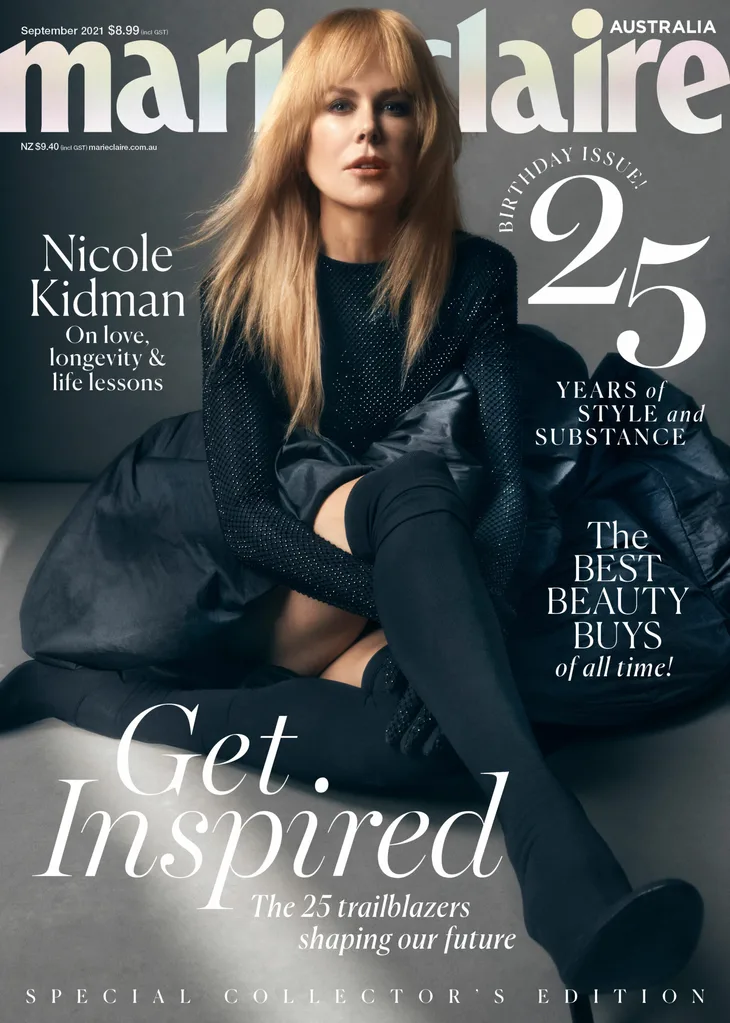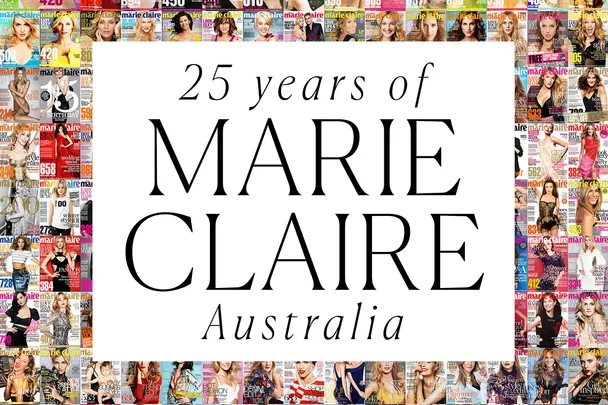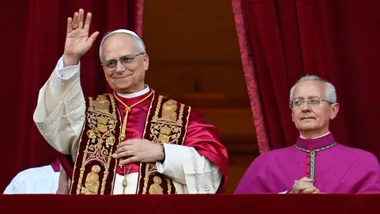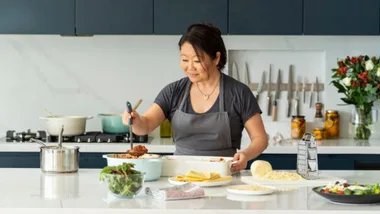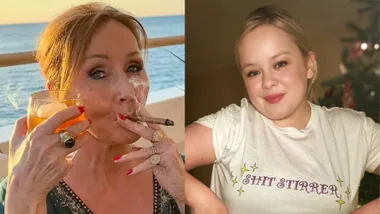It was 1995 and leaders from 189 countries had gathered in Beijing for the United Nations’ Fourth International Conference on Women. The passionate delegates – mostly women – were there to create what would become a ground breaking action plan that would shape global female empowerment for the next 25 years. Yet unbelievably that wasn’t the take-away headline from the conference. Many of the guests were waiting to hear from the headline speaker, the then First Lady of the United States, Hillary Rodham Clinton. Clinton didn’t disappoint, famously declaring to all the catch-cry of a generation: “Women’s rights are human rights and human rights are women’s rights.’’ The speech took “women’s issues” out of the niche back blocks and has had long-lasting impact on the advancement of women and girls across the world. (Oh, and played a big role in making Clinton a superhero for feminists. Everywhere.)
So it was fitting that against this backdrop of momentous female progression and the global push for women’s rights that a new magazine was launching in Australia that aimed to reflect those very ideals: marie claire. But not everyone thought a fashion magazine with feminist credentials was a good idea.
“It’s hard to describe how ground breaking the magazine was when it started,’’ launch editor Jackie Frank says now.
“It is purpose-driven, it is smart, it treats women as multi-dimensional. It was the first fashion magazine to actually say women could covet a pair of shoes and also be worried about what was going on in the world. This was such new territory at the time. We became known as the thinking-woman’s magazine, which was a title we wore with pride.’’
The magazine certainly felt unlike any other fashion title on the market. It was a brand of contrasts: on one hand there were the award-winning investigative journalism pieces that exposed injustices around the world and encouraged female readers to take up the fight for causes. On the other hand there was the high-gloss glamour of fashion and beauty stories, shot at some of the world’s most jaw-dropping locations. The magazine managed to successfully mix the aspirational with activism, and it was a lethal combo.
Nicky Briger, who worked as a subeditor on the launch title and is now the magazine’s editor, remembers many days of working from 7am to 2am to get that first issue out.
“The excitement was intense; we really believed we were creating something important and unique,” she recalls.
“People didn’t really talk about things like domestic violence, sexual assault, the pay gap and female representation in top jobs and politics. We were determined to not only highlight those issues but also agitate for change. We didn’t care about the workload because we were so passionate about what we were creating.”
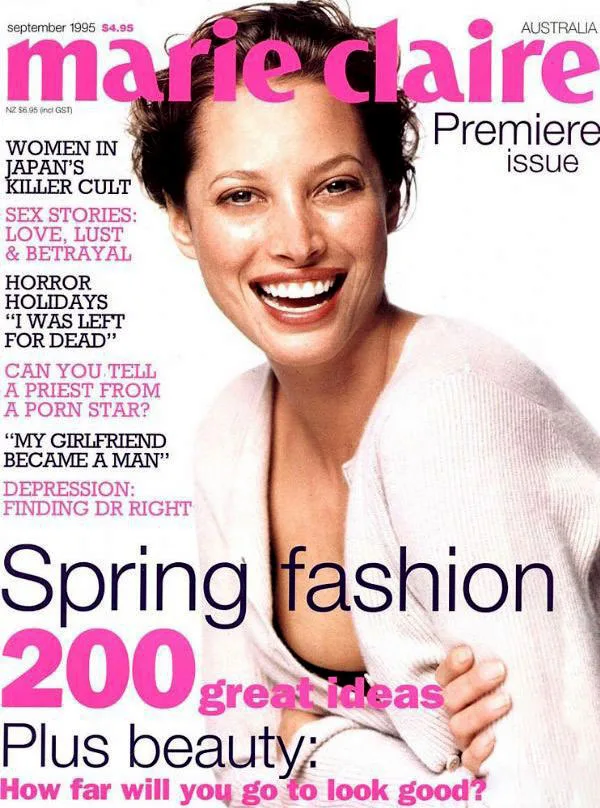
marie claire never shied from telling uncomfortable, emotional or confronting stories. In the first few years of the magazine, the team covered controversial stories on everything from child brides, female genital mutilation and rape as a weapon of war, to workplace virginity tests, trans rights and child slavery. Real-life issues were also explored with both integrity (interviewing young girls who had been jailed for having an abortion) and humour (asking readers to pick their partner’s penis from a line-up of images).
But along with its unique storytelling approach, the title also quickly became known for its glamorous excesses, starting with the million-dollar launch party, the likes of which have not been seen in the local industry since. “To this day, it’s still the most extravagant party I’ve ever attended,” says Briger. In fact, the party still gets a mention in stories on Australia’s most fabulous events. (It’s also worth finding the behind-the-scenes video on YouTube.) The publisher (and Rupert Murdoch’s nephew) Matt Handbury hosted the blow-out at his Point Piper mansion on Sydney Harbour.
“There was a giant dancefloor built over the pool and jutting out over the harbour, with more than 500 guests heaving to live bands and DJs,” Briger remembers. There were fireworks, “and the backdrop was a 20-metre long neon marie claire sign sitting in the middle of the harbour. It was magic.”
When the issue hit the stands and the sales reports came in, circulation was three times what was predicted.
“Not long after, we started winning serious journalism awards and making real impact with our campaigns,” Frank adds. “Everyone wanted to be a part of it. We had arrived!”

Launching straight into success is something of a marie claire tradition, beginning with the very first issue, Jean Prouvost, a businessman and media owner, launched the magazine with Marcelle Auclair, a novelist and poet, in France in 1937. Prouvost’s goal was to create a weekly magazine that spoke to all women, both “la Petite Française” and “la Duchesse d’Aven”. The pair knew they were onto something when the first issue immediately sold 500,000 copies. The title was so popular that police were asked to keep the peace at newsstands. By 1939, when the country was on the brink of World War II, the magazine was selling one million copies a week.
It was in the ’70s that marie claire really established its reputation as a feminist bible, thanks to one of Prouvost’s granddaughters, Evelyne. Enlightened by the peak of second-wave feminism, Evelyne enthusiastically forged new frontiers, creating the international Groupe Marie Claire as an umbrella for all the women’s titles in her grandfather’s empire (which now number 35).
Frank, who’d left her Melbourne home to find fame and fortune as a fashion stylist overseas, freelanced at the agenda-setting British edition of marie claire before becoming the launch fashion editor of its sister publication in the US. Along the way, she was soaking up the brand’s DNA – understanding that a passion for social issues and love of the latest Dior bag weren’t mutually exclusive.
In these first issues as editor of marie claire Australia, Frank set the tone for much of the next 25 years by loading the front pages with informative and emotional news stories, and the back pages with a beauty and fashion reprieve.
“I would always say the first half was like a tabloid newspaper and the back half was the respite,” says Frank. “That was where all the beautiful and dreamy fashion pictures are.”
That juxtaposition between hard-hitting news stories and fabulous fashion and beauty has always been part of the appeal of marie claire. The fashion team travelled the world (until last year, of course) to bring back stunning imagery, and in the process introduced an emerging generation of local designers to the global stage.
“marie claire brought a fantastic international quality to the magazine scene in Australia,” recalls Jane Roarty, the launch fashion director of the Australian title.
”We had access to the world’s best models and photographers and they were clamouring to work with us.When I first started, I travelled nearly every six weeks to some of the most exotic places in the world. It was exhilarating.”

While Frank has many fond fashion memories from her time at the helm of the magazine, the story that stands out the most for her is the feature about China’s one-child policy, from January 2002.
“We sent a photographer and a writer to China, and they saw a dead baby girl in the gutter with people walking over her. They took the picture and then had to flee the country,” Frank recalls.
“When I saw that picture, it was one of those seminal moments: it was so disturbing. [Publishing it] was so dangerous, but it really summed up and exposed the country’s disregard for baby girls.”
Exposing social injustices both abroad and at home, and then agitating for change, has been the cornerstone of the marie claire philosophy for the past 25 years – and the ideas for campaigns came from everywhere. In 1998, Frank was pregnant and flew overseas to a marie claire conference where excited editors asked her what she was going to do with her time off. She didn’t know what they were talking about; who’d ever heard of your company paying you while you take care of your baby? As a result the magazine’s Push It! campaign ran for eight years and, in 2010, legislation passed for Australia’s first Paid Parental Leave scheme. The government even acknowledged marie claire’s ever-present support for the cause.
The passion for social reform has been relentless, and in the past quarter century marie claire has fought for change across the spectrum, calling for reforms in domestic violence laws, sexual assault legislation, abortion rights, sex discrimination laws and climate change policies, among others. Since the 2001 Reconciliation campaign, we have also fought for better understanding between Indigenous and non- Indigenous Australians and, more recently, the It’s Time issue (February 2020) was dedicated to supporting the Uluru Statement from the Heart. “We’re still waiting for First Nations people to be enshrined in the Constitution, but I honestly feel we’re inching closer to recognition and reform,” Briger says.
Whether in print or online, the commitment to fighting and campaigning for the issues that really matter has never wavered. We celebrate the stories of women either in the pages of the magazine, on our social media feeds or at any of our innovative initiatives – such as our Glass Ceiling Awards, which celebrate female trailblazers. At the heart of the magazine is a real belief in the power of women to make the world a better place.
“And the success of all these big ideas and campaigns is all due to you, our wonderful readers,” says Briger.
“You have passionately supported our causes, got angry at injustices, laughed and cried at our stories, been uplifted by our beautiful fashion and beauty and demanded better from our leaders. So it’s to you we raise a glass as we look forward to embracing the next 25 years.”
This story originally appeared in the September issue of marie claire Australia, out now.
